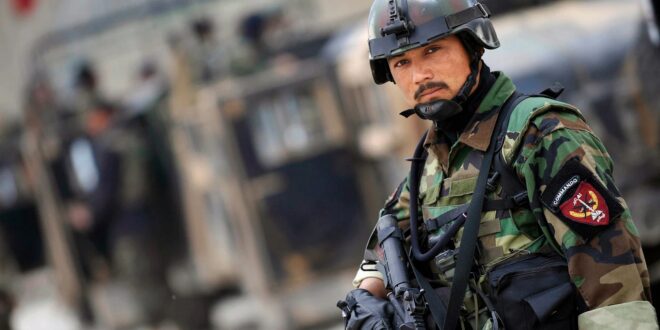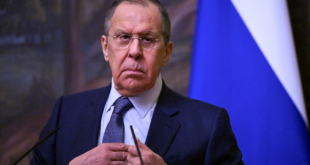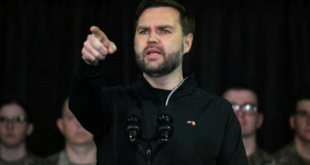If you’ve read the plethora of post-mortem reports on Afghanistan, there are plenty of enemies to go around, from corruption, to incompetent leadership, to 20 years of rosy assessments from our own defense establishment. For me, there is a single day that Afghanistan died, and it was June 16, 2021.
I have spent my entire adult life studying insurgency and terrorism, sometimes with books and research, other times from the barrel of a gun, and because of it, I have learned Napoleon’s ultimate truth: In warfare, the moral is to the physical as three is to one. Insurgency as a form of warfare is based on faith and belief that one will win. Why else would a peasant take up a rifle and fight against an entrenched government with every bit of that physical capability against him, if not for the belief that he or she would eventually win? It is the single form of warfare where perception can actually become reality — and that is exactly what happened in Afghanistan on June 16, 2021.
The Afghanistan Commandos are the only force in the Afghanistan National Army (ANA) that actually fight and win. They have done so since we began building them, first with the CIA, then with our own Special Forces. They were known as the only force that had no tribal affiliation and were the only force in the country that would fight for the state of Afghanistan regardless of the human terrain. And they were really good. At one point, toward the end, they were conducting upwards of 90 percent of all combat actions inside the country — strained to the breaking point but succeeding with the support of the United States.
And then we pulled the support.
There was a nationwide plan for Commando use, which, put simply, was that they would insert and clear out Taliban influence, and then would be replaced with regular ANA components to keep the area secure and out of Taliban control. To this, they had been very successful. On that fateful day in June, everything changed.
The Commandos assaulted a village called Dawlat Abad and routed the Taliban. They called in the ANA to take over, and the ANA refused to enter, afraid of the Taliban. The Taliban regrouped and surrounded the village, pounding it with mortar fire and conducting a siege, until the small contingent of Commandos had no recourse but to surrender. Calls for air support went unheeded, because America had pulled the maintenance capability of the very aircraft that would have responded. There was no help coming.
Twenty-two Commandos surrendered to the Taliban. All 22 were summarily executed — on video. One of the men killed was a soldier named Sohrab Azimi. He was the son of an ANA general, trained in the United States, and engaged to be married to a United States citizen. He could have done anything with his life, but he chose to lead the Commandos. He was the best and brightest of Afghanistan, and he was killed on the street with a bullet to the back of his head because his pleas for air support went unheeded.
The news of June 16 didn’t even create a blip in the United States. Nobody cared, but make no mistake, the average soldier or civilian in the Afghanistan hierarchy did. Sohrab Azimi was a national hero in Afghanistan. He was like a cross between Captain America and Saladin. I read the story and felt horrible at the loss. When I thought about it pragmatically, the only thought that entered my mind was, “This is the end.” And that was two months before the fall of Kabul. Perception in insurgency has a sway all its own. It becomes reality, and when the action happened, I saw the reality.
Why would any small-time regular soldier of the ANA stand against the Taliban when the vaunted Commandos tried to do so and were unceremoniously executed on the street? When the man who represented them as the future of Afghanistan died in a puddle of blood on his knees? Regardless of the failure from the cowards of the ANA, the signal was sent by our lack of support that nobody is coming to help. If you stand against the Taliban, you will die. Even your brothers will refuse to help.
And that perception began to grow with every village that capitulated. It began to take on a life of its own, until it was a foregone conclusion. General Scotty Miller, the last commander of Afghanistan, said as much on his way out the door a month before the fall. In an ABC This Week interview, he said “. . . war is physical, but it’s also got a psychological or moral component to it. And hope actually matters. And so, as you watch the Taliban moving across the country, what you don’t want to have happen is that the people lose hope and they believe they now have a foregone conclusion presented to them. Civil war is certainly a path that could be visualized. That should be a concern for the world.”
At that point, he didn’t believe it was a forgone conclusion, but it was. All hope was lost. The signal sent by our lack of support was precisely the perception that the Taliban wanted: You are all going to die. And the people in positions of authority both low and high took that to heart. Afghanistan was done on that date.
What is tragic to me is that we held the country together with only 2,500 troops. Why did we leave? Strategically, Bagram Airbase was the single thorn in the side of everyone in the neighborhood. The current administration keeps talking about “shifting focus” to “threats that matter” in order to “get out of the forever wars” but take a look at the location of Afghanistan. To the north of Bagram airfield is Russia. To the east is China. To the west is Iran. You couldn’t ask for a better force-projection platform for the shift to the so-called “Great Power Competition.” Giving that up is a self-defeating prophecy. And that’s before we allowed the Taliban to free 5,000 terrorist prisoners from their cells on the base.
Every time I hear the words “Forever War,” as if that’s a mantra against fighting for United States interests, I can’t help but think about Korea. We are literally at war on the Korean peninsula to this day. We never signed a peace treaty, but our positioning of troops there has stabilized the region for close to 70 years. And the cost was well worth it. Nobody in America cares about this, but we have 29,000 troops in South Korea. So, 2,500 troops in Afghanistan was a ball breaker?
Our hasty withdrawal from Afghanistan will do nothing for stability in the region or our own security. Beyond the strategic loss of Bagram as a power-projection platform, the Taliban are going to welcome terrorist groups with open arms. The administration claims that this is no big deal, because terrorists are operating in ungoverned spaces such as Yemen, Libya, and Somalia right now, and we deal with them from “over the horizon,” but this is a chimera. One, you need intelligence to decipher terrorist threats. Who is going to give us that in Afghanistan? Nobody, that’s who, because being seen as helping the United States is a death sentence. Two, there is an enormous difference between terrorist groups operating in ungoverned spaces and terrorist groups operating with the support of a state. If you question this, take a look at Hezbollah versus al-Qaeda right now. One has the capability — supported by Iran — to literally cause the downfall of the State of Israel. The other is living in a cave fantasizing about future attacks, waiting on their perception to become reality.
There are a lot of different reasons for the fall of Afghanistan, and plenty of blame to go around, but the end result was not pre-ordained.
Until June 16, 2021. When perception became reality.
 Eurasia Press & News
Eurasia Press & News




